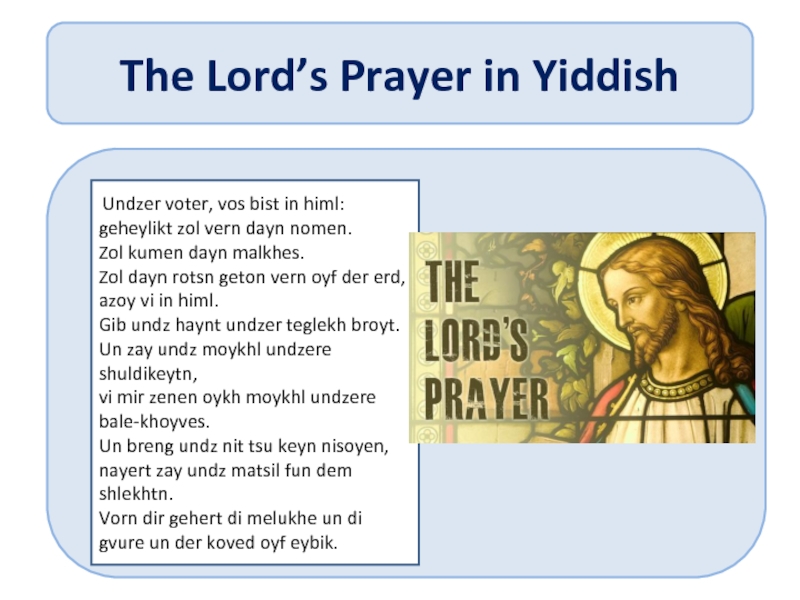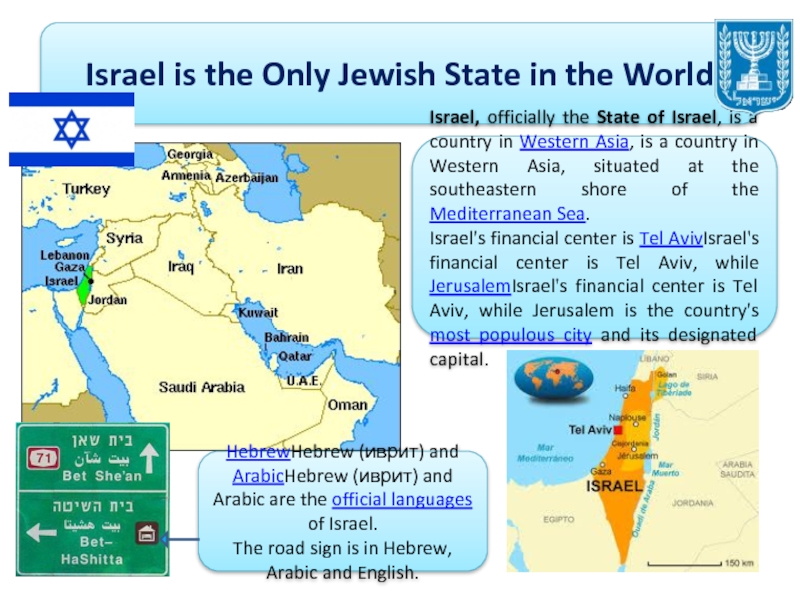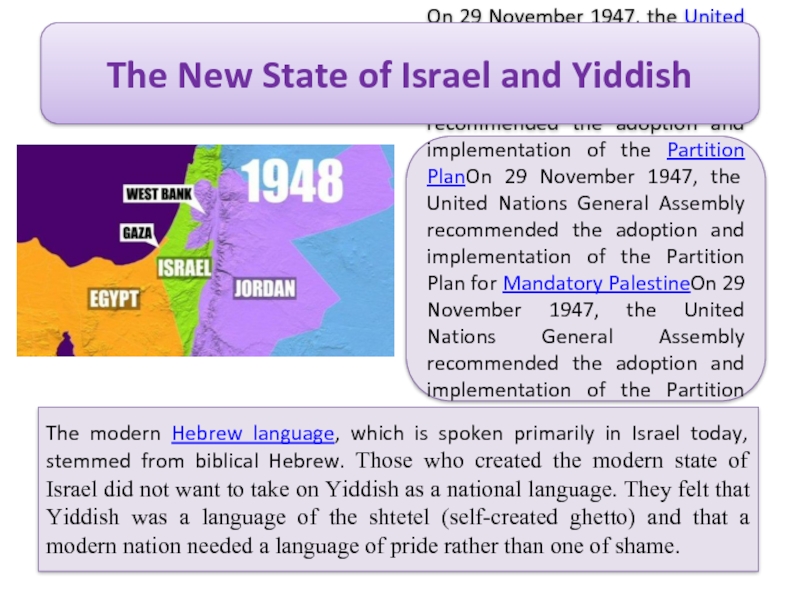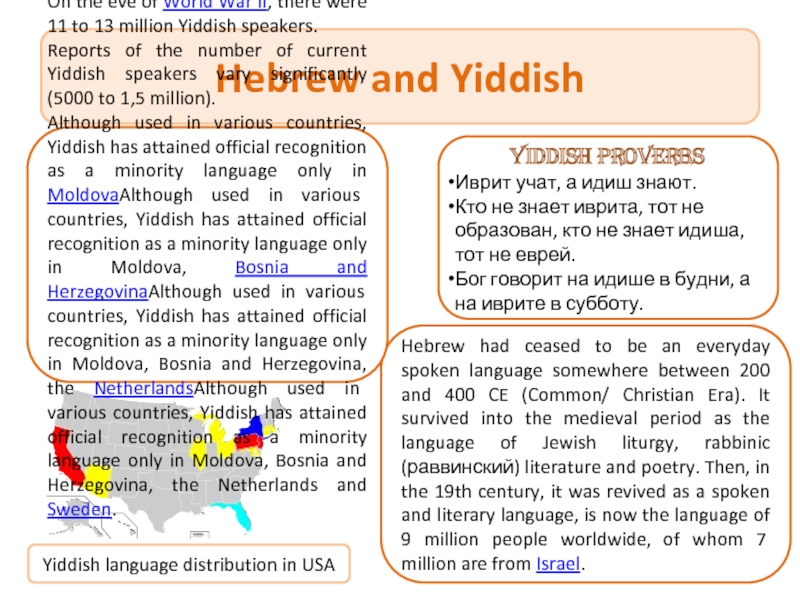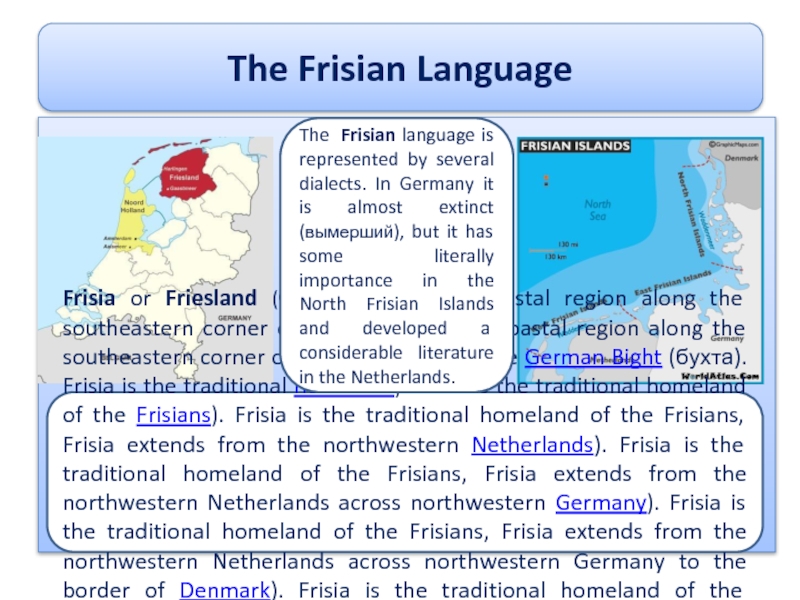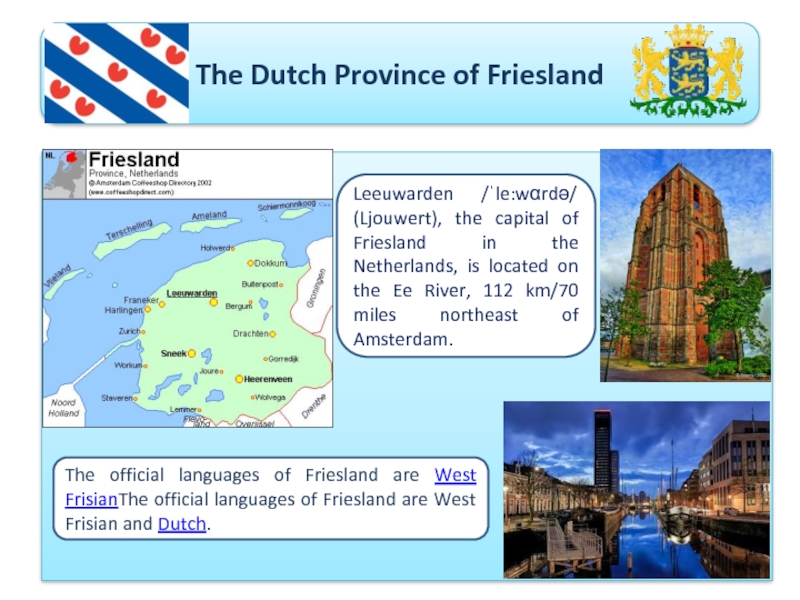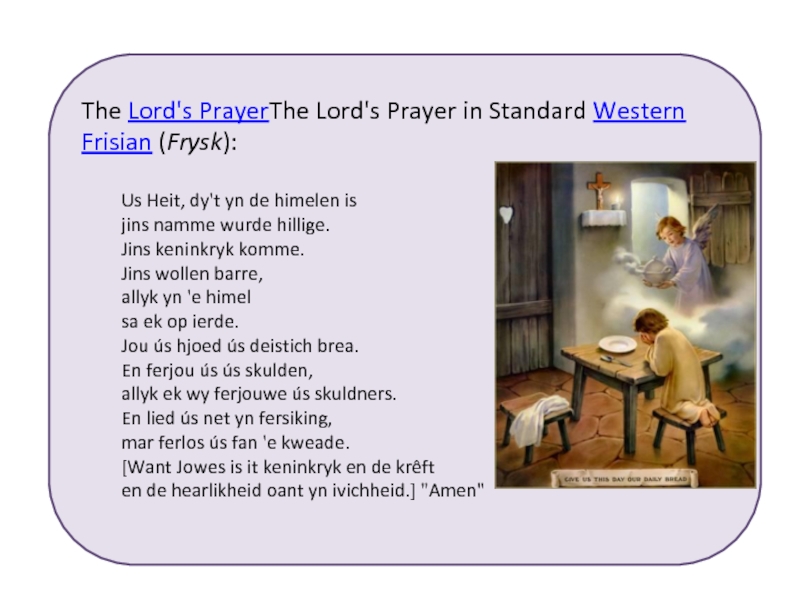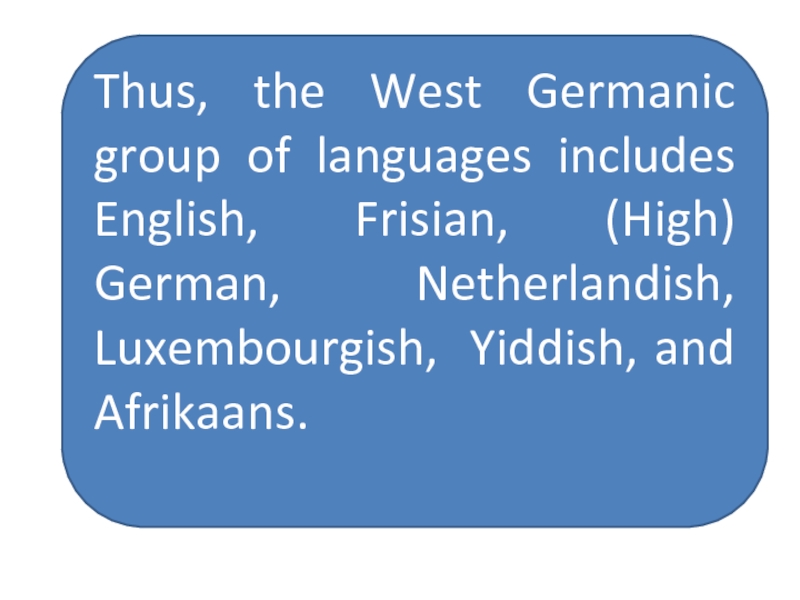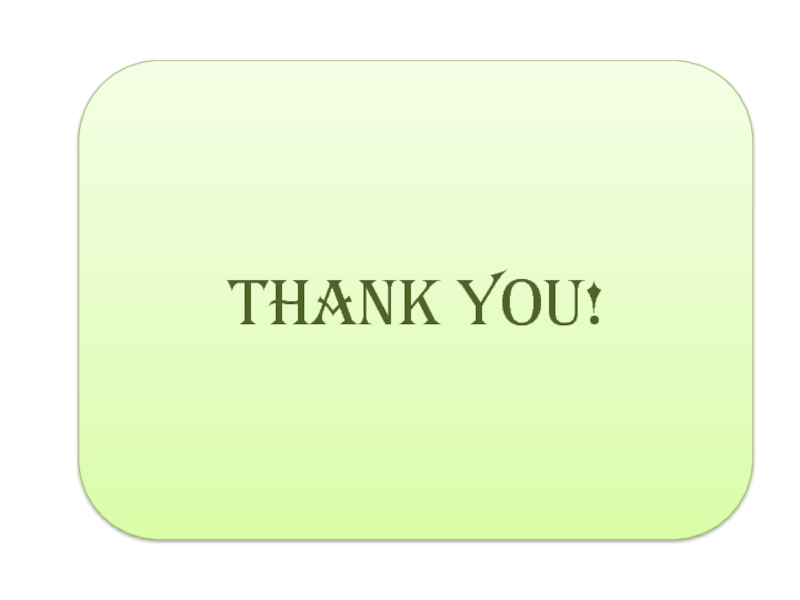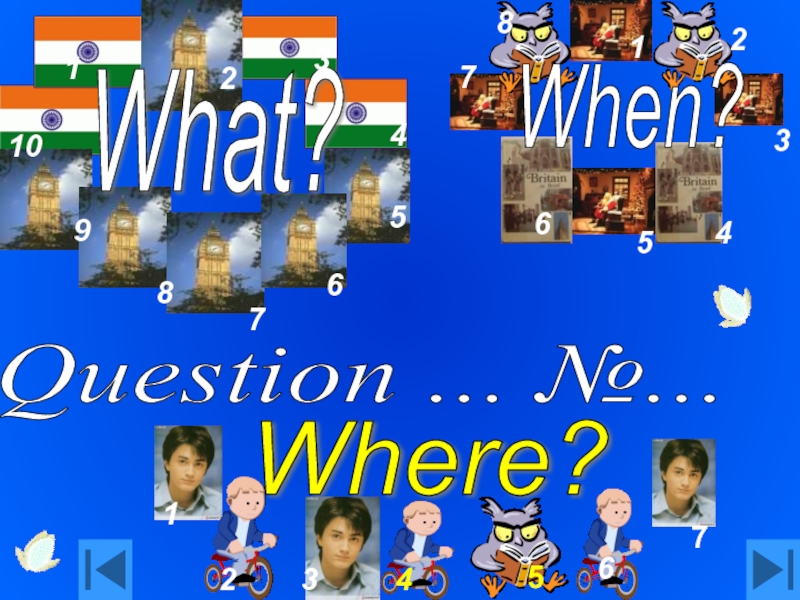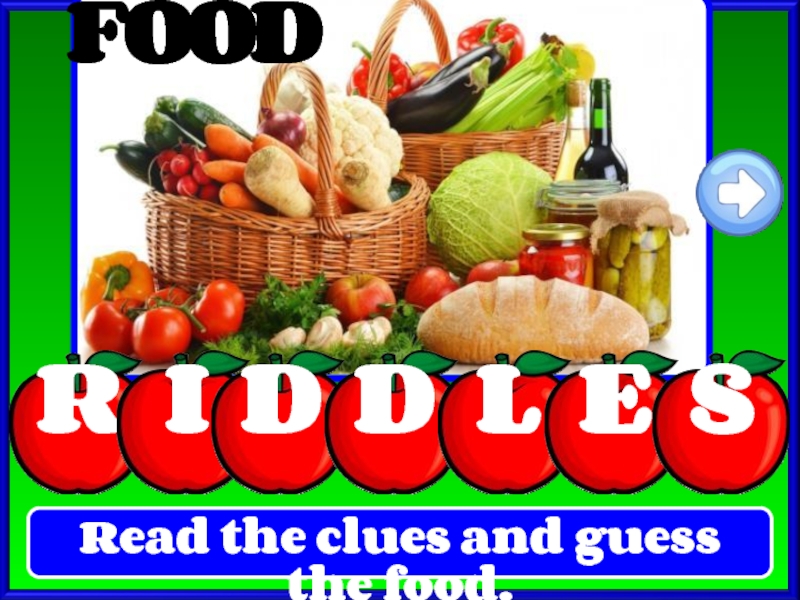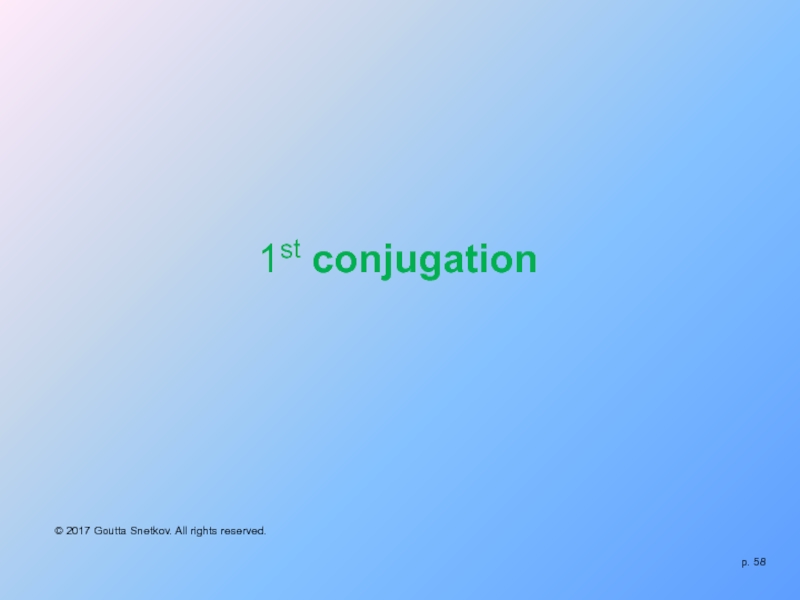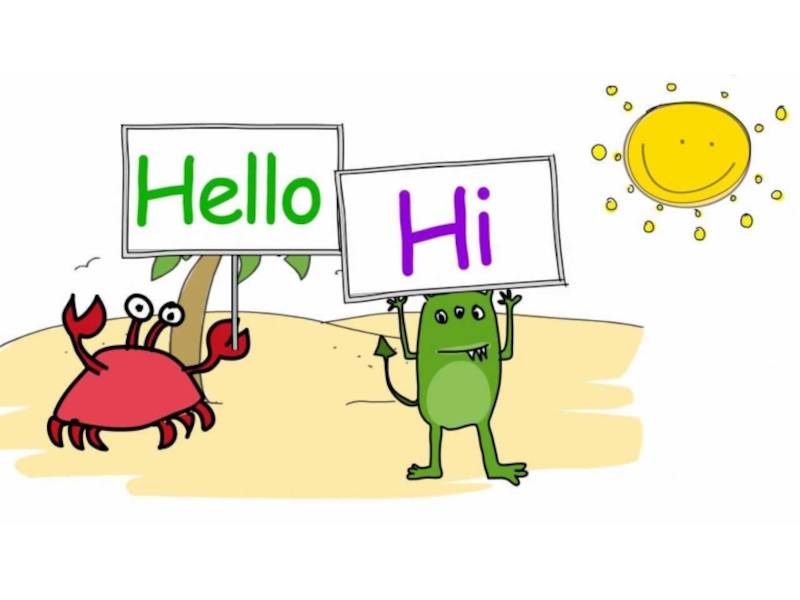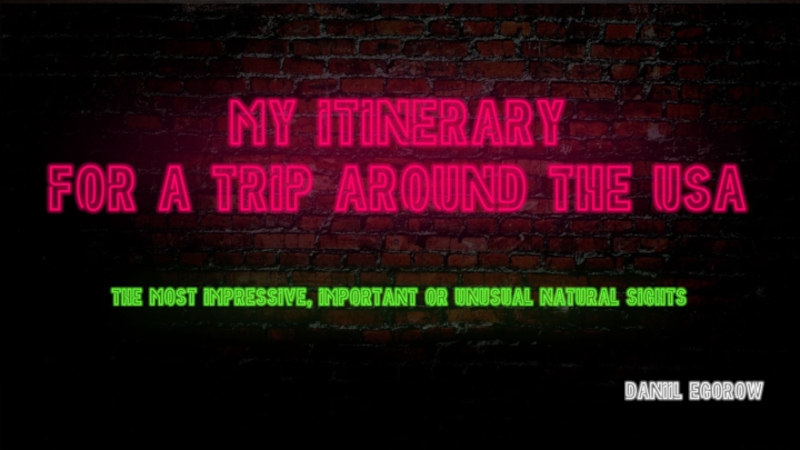- Главная
- Разное
- Дизайн
- Бизнес и предпринимательство
- Аналитика
- Образование
- Развлечения
- Красота и здоровье
- Финансы
- Государство
- Путешествия
- Спорт
- Недвижимость
- Армия
- Графика
- Культурология
- Еда и кулинария
- Лингвистика
- Английский язык
- Астрономия
- Алгебра
- Биология
- География
- Детские презентации
- Информатика
- История
- Литература
- Маркетинг
- Математика
- Медицина
- Менеджмент
- Музыка
- МХК
- Немецкий язык
- ОБЖ
- Обществознание
- Окружающий мир
- Педагогика
- Русский язык
- Технология
- Физика
- Философия
- Химия
- Шаблоны, картинки для презентаций
- Экология
- Экономика
- Юриспруденция
Modern Germanic Languages презентация
Содержание
- 1. Modern Germanic Languages
- 2. Pre-Migration-Period Germanic Tribes
- 3. The history of the Germanic group
- 4. Development of the Proto-Germanic Language Proto-Germanic
- 6. A few centuries before our era
- 7. EUROPE in 500 AD
- 8. Germanic Languages in Europe
- 9. Germanic languages are classified into three subgroups:
- 10. North Germanic Languages The Germanic tribes
- 11. Swedes [swi:dz], Danes [deinz], and Norwegians
- 12. The Norwegian Language Royal
- 13. Examples of Norwegian (The
- 14. Swedish /ˈswi:diʃ/ is a North Germanic
- 15. An example of the Dalska spoken in
- 16. The Danish ['dæniʃ] Language
- 17. An example of Danish (The Lord's
- 18. The Faeroese Language Tórshavn («гавань Тора»),
- 19. Lord’s Prayer in Faeroese
- 20. Icelandic / /aɪsˈlændɪk /aɪsˈlændɪk/, the language
- 21. Faðir vor, þú sem ert
- 22. The origin of Icelandic [ais'lændik]
- 23. West Germanic Languages The
- 24. The German Language Knowledge
- 25. German speaking countries in Europe Liechtenstein Austria Switzerland Germany
- 26. D-A-CH or DACH is an
- 27. Beginning of German
- 29. The Netherlandish Language Nowadays Dutch
- 30. Onze Vader
- 31. The Luxembourgish Language The
- 32. The Lord’s Prayer in
- 33. The Afrikaans Language Slogan in
- 34. Afrikaans – Speaking Countries The
- 35. The Lord’s Prayer in Afrikaans Ons
- 36. /8 Yiddish Yiddish alphabet Yiddish ['jidiʃ]
- 37. /*************************************** The Lord’s Prayer in Yiddish
- 38. Israel is the Only Jewish State
- 39. On 29 November 1947, the
- 40. Yiddish proverbs Иврит учат, а
- 41. The Frisian Language Frisia or
- 42. The Dutch Province of Friesland
- 43. The Lord's PrayerThe Lord's Prayer in Standard
- 44. Bilingual sign in NiebüllBilingual sign
- 45. The English Language In
- 46. Thus, the West Germanic group of languages
- 47. Thank you!
Слайд 3
The history of the Germanic group begins with the appearance of
The Proto-Germanic Language is the parent-language of the Germanic group of languages.
The ancient Germans (or Teutons /'tju:t(ә)nz/) settled on the southern coast of the Baltic Sea in the region of the Elbe (the most probable original home of the Germans).
The Proto-Germanic Language
Слайд 4
Development of the Proto-Germanic Language
Proto-Germanic is an entirely pre-historical language. It
At the earliest stages of history Proto-Germanic was fundamentally one language, though dialectally coloured.
Towards the beginning of our era the Germanic language was divided into dialectal groups and tribal dialects.
Слайд 6
A few centuries before our era the Germanic tribes moved north,
At the beginning of our era some tribes returned to the mainland. From this stage of their history the Germanic languages can be described under 3 headings:
East Germanic,
North Germanic
and West Germanic.
Germanic Group of Languages
Слайд 10
North Germanic Languages
The Germanic tribes who stayed in Scandinavia after the
The principal linguistic differentiation ['dif(ə)renʃi'eiʃ(ə)n] in Scandinavia corresponds to the political division into Sweden ['swi:d(ə)n], Denmark and Norway ['nↄ:wei], as we may say that there are really only two Scandinavian languages: Continental (Swedish, Danish, and two standard varieties [və'raiətiz] of Norwegian [nↄ:'wi:ʤ(ə)n]) and Insular ['insju:lə] (островной) (Icelandic and Faeroese [fɛərəu'i:z]).
Слайд 11
Swedes [swi:dz], Danes [deinz], and Norwegians can understand each other’s speech
But as soon as political and historical criteria [krai'tiəriə] are taken into ac'count, we have to 'recognise three continental Scandinavian languages: Swedish ['swi:diʃ], Danish ['dæniʃ] and Norwegian [nↄ:'wi:dʒ(ə)n].
Continental Countries and Continental Languages
Слайд 12
The Norwegian Language
Royal Palace of Norway in Oslo
Norway, officially
One of the hypotheses of the origin of the name of the capital Oslo is from Old Icelandic ‘Aesir god’ + lo ‘glade’.
Oslo at Night
Norwegian (norsk) is a North Germanic) is a North Germanic language) is a North Germanic language spoken primarily in Norway, where it is the official language. There are two official forms of written Norwegian – Bokmål (literally "book tongue") and Nynorsk (literally "new Norwegian"). Nynorsk and Bokmål provide standards for how to write Norwegian, but not for how to speak the language. most Norwegians speak their own dialect in all circumstances.
Слайд 13
Examples of Norwegian (The Lord's Prayer) in Nynorsk and Bokmål.
Bokmål:
Fader vår,
Nynorsk:
Fader vår, du som er i himmelen!
Lat namnet ditt helgast.
Lat riket ditt koma.
Lat viljen råda på jorda
så som i himmelen.
Gje oss i dag vårt daglege brød.
Forlat oss vår skuld
som me òg forlet våre skuldmenn.
Før oss ikkje inn i freisting,
men frels oss frå det onde.
For riket er ditt og makta i all æve. Amen.
Слайд 14
Swedish /ˈswi:diʃ/ is a North Germanic is a North Germanic language
Stockholm / /ˈstɒkhoʊm /ˈstɒkhoʊm/ is is the capital of Sweden /ˈstɒkhoʊm/ is is the capital of Sweden and the most populous city in the Nordic region. The name Stock-holm means "Log-Islet".[
Royal Palace in Stockholm
Слайд 15An example of the Dalska spoken in €lvdalen (The Lord's Prayer):
Dalska is a distinct Swedish dialect. It is archaic in several respects, and it is incomprehensible to speakers of Standard Swedish.
Fader uor, du so ir i imblum. Mo namned dett werd elgad. Mo ritsjed dett kumŒ. Mo wila dai stsji nido juord'n, hlaisog uppi imblam. DsjŠv uoss i dag bršd uott fer da'n Og felŒt uoss skulder uorer, hlaisog wid am felŠted diem so irŒ stsjylduger uoss nod. Og stell it uoss fšr frestelsum, ŒtŒ redd uoss fro uonda. [Fer ritsjed ir dett og makte og Šrrligiete i ievigiet. Amen.]
Слайд 16
The Danish ['dæniʃ] Language
Much of Denmark is highly urbanised, such as
Denmark is the most southern of the Nordic countries. The name of its capital derives from Køpmannæhafn, meaning "merchants' harbour ".
Слайд 17
An example of Danish (The Lord's Prayer):
Vor Fader, du som er
Keep Dog on Leash
Danish Runic Inscription
Слайд 18
The Faeroese Language
Tórshavn («гавань Тора»),
the capital city of the Faroe
Faroese //ˌfɛəroʊˈiːz/ˌfɛəroʊˈiːz//ˌfɛəroʊˈiːz/) is a North Germanic language/ˌfɛəroʊˈiːz/) is a North Germanic language spoken as a native language by about 66,000 people, 45,000 of whom reside on the Faroe Islands («Овечьи острова»)
and 21,000 in other areas, mainly Denmark.
The Faroe Islands are a self-governingThe Faroe Islands are a self-governing country within the Danish Realm
Слайд 19
Lord’s Prayer in Faeroese
Faðir vár
Faðir vár, Tú, sum ert í Himli.
Heilagt
Слайд 20
Icelandic / /aɪsˈlændɪk /aɪsˈlændɪk/, the language of Iceland («ледяная страна»)
The
Слайд 21
Faðir vor, þú sem ert á himnum.
Helgist þitt nafn.
Til komi þitt
Lord’s Prayer in Icelandic
Слайд 22
The origin of Icelandic [ais'lændik] goes back to the Viking ['vaikiŋ]
Icelandic retains a four-case synthetic grammar, but considerably more conservative and synthetic than German.
If the Norman Conquest had not occurred, tourist phrases in present-day English might have looked something like the following phrases in modern Icelandic!
I need to send a fax. Eg кarf að senda fax.
I need to buy a map. Eg кarf að kaupa kort.
Can you take us to the airport? Geturðu fariþ með okkur a flugvöllinn?
Can you take us to our hotel? Geturðu keyrt okkur a hotelið okkar?
Modern Icelandic
Слайд 23
West Germanic Languages
The West Germanic languages constitute the largest of the
Слайд 24
The German Language
Knowledge of the German language throughout Europe. German has
The German language is the most widely spoken first language in the European UnionThe German language is the most widely spoken first language in the European Union, with around 100 million native speakers. German is primarily spoken in GermanyThe German language is the most widely spoken first language in the European Union, with around 100 million native speakers. German is primarily spoken in Germany (where it is the first language for more than 95% of the population), AustriaThe German language is the most widely spoken first language in the European Union, with around 100 million native speakers. German is primarily spoken in Germany (where it is the first language for more than 95% of the population), Austria (89%), SwitzerlandThe German language is the most widely spoken first language in the European Union, with around 100 million native speakers. German is primarily spoken in Germany (where it is the first language for more than 95% of the population), Austria (89%), Switzerland (65%), the majority of LuxembourgThe German language is the most widely spoken first language in the European Union, with around 100 million native speakers. German is primarily spoken in Germany (where it is the first language for more than 95% of the population), Austria (89%), Switzerland (65%), the majority of Luxembourg, and Liechtenstein /ˈlikt(ǝ)nstain/ - the latter being the only state with German as the sole official and spoken language.
Слайд 26
D-A-CH or DACH is an acronym is an acronym used to
Germany (D for Deutschland)
Austria (A for Austria, in German "Österreich")
Switzerland (CH for Confoederatio Helvetica, in German "(die) Schweiz")
"Dach" is also the German word for "roof", and is used in linguistics in the term Dachsprache.
DACH
Слайд 27
Beginning of German
Towards the 12th c. dialects of Middle and High
The Germanic-speaking area of the Holy Roman Empire around AD 962.
Слайд 29
The Netherlandish Language
Nowadays Dutch and its variant in Belgium, known as
Слайд 30
Onze Vader in de hemel,
laat uw naam hierin geheiligd worden,
laat uw
An example of Dutch (The Lord's Prayer):
Слайд 31
The Luxembourgish Language
The Grand Duchy of Luxembourg is a landlocked country
Luxembourgish [lᴧksǝmˈbǝ:giʃ] is spoken in Luxembourg and some small regions of Belgium and France (about 400,000 people).).
Слайд 32
The Lord’s Prayer in Luxenbourgish
Eise Papp
Eise Papp am Himmel,
gehellegt
Слайд 33
The Afrikaans Language
Slogan in front of the Afrikaans Language Monument,
In the 17th c. South Africa was colonized by Dutch migrants. Their dialects in Africa eventually grew into a separate West Germanic language, Afrikaans ['æfrikα:n(t)s]. It is spoken by 3 million 500 thousand people.
Слайд 34
Afrikaans – Speaking Countries
The Afrikaans language is an official language
Spoken mainly by the Afrikaners, descendants of Dutch and other 17th century colonists — it is a variety [və'raiəti] of the Dutch language, modified by the influence of German, French, English as well as local languages. It became an independent standardized ['stændədaizd] written language in the end of the 19th c.
Flag of South Africa
Flag of Namibia
Слайд 35
The Lord’s Prayer in Afrikaans
Ons Vader wat in die hemel is,
Слайд 36/8
Yiddish
Yiddish alphabet
Yiddish ['jidiʃ] grew from the High German dialects which were
Слайд 37/***************************************
The Lord’s Prayer in Yiddish
Undzer voter, vos bist in himl:
geheylikt zol vern dayn nomen.
Zol kumen dayn malkhes.
Zol dayn rotsn geton vern oyf der erd, azoy vi in himl.
Gib undz haynt undzer teglekh broyt.
Un zay undz moykhl undzere shuldikeytn,
vi mir zenen oykh moykhl undzere bale-khoyves.
Un breng undz nit tsu keyn nisoyen,
nayert zay undz matsil fun dem shlekhtn.
Vorn dir gehert di melukhe un di gvure un der koved oyf eybik.
Слайд 38
Israel is the Only Jewish State in the World
Israel, officially the
Israel's financial center is Tel AvivIsrael's financial center is Tel Aviv, while JerusalemIsrael's financial center is Tel Aviv, while Jerusalem is the country's most populous city and its designated capital.
HebrewHebrew (иврит) and ArabicHebrew (иврит) and Arabic are the official languages of Israel.
The road sign is in Hebrew, Arabic and English.
Слайд 39
On 29 November 1947, the United Nations General AssemblyOn 29 November
The New State of Israel and Yiddish
The modern Hebrew language, which is spoken primarily in Israel today, stemmed from biblical Hebrew. Those who created the modern state of Israel did not want to take on Yiddish as a national language. They felt that Yiddish was a language of the shtetel (self-created ghetto) and that a modern nation needed a language of pride rather than one of shame.
Слайд 40
Yiddish proverbs
Иврит учат, а идиш знают.
Кто не знает иврита, тот не
Бог говорит на идише в будни, а на иврите в субботу.
Hebrew and Yiddish
Yiddish language distribution in USA
Hebrew had ceased to be an everyday spoken language somewhere between 200 and 400 CE (Common/ Christian Era). It survived into the medieval period as the language of Jewish liturgy, rabbinic (раввинский) literature and poetry. Then, in the 19th century, it was revived as a spoken and literary language, is now the language of 9 million people worldwide, of whom 7 million are from Israel.
On the eve of World War II, there were 11 to 13 million Yiddish speakers.[
Reports of the number of current Yiddish speakers vary significantly (5000 to 1,5 million).
Although used in various countries, Yiddish has attained official recognition as a minority language only in MoldovaAlthough used in various countries, Yiddish has attained official recognition as a minority language only in Moldova, Bosnia and HerzegovinaAlthough used in various countries, Yiddish has attained official recognition as a minority language only in Moldova, Bosnia and Herzegovina, the NetherlandsAlthough used in various countries, Yiddish has attained official recognition as a minority language only in Moldova, Bosnia and Herzegovina, the Netherlands and Sweden.
Слайд 41
The Frisian Language
Frisia or Friesland (Фрисландия) is a coastal region along
The Frisian language is represented by several dialects. In Germany it is almost extinct (вымерший), but it has some literally importance in the North Frisian Islands and developed a considerable literature in the Netherlands.
Слайд 42
The Dutch Province of Friesland
Leeuwarden /ˈle:wαrdǝ/ (Ljouwert), the capital of Friesland
The official languages of Friesland are West FrisianThe official languages of Friesland are West Frisian and Dutch.
Слайд 43The Lord's PrayerThe Lord's Prayer in Standard Western Frisian (Frysk):
Us Heit,
jins namme wurde hillige.
Jins keninkryk komme.
Jins wollen barre,
allyk yn 'e himel
sa ek op ierde.
Jou ús hjoed ús deistich brea.
En ferjou ús ús skulden,
allyk ek wy ferjouwe ús skuldners.
En lied ús net yn fersiking,
mar ferlos ús fan 'e kweade.
[Want Jowes is it keninkryk en de krêft
en de hearlikheid oant yn ivichheid.] "Amen"
Слайд 44
Bilingual sign in NiebüllBilingual sign in Niebüll in North Frisia (Germany)
Bilingual signs HindeloopenBilingual signs Hindeloopen in Friesland (Netherlands) with the West Frisian name above and the Dutch below.
Frisian is genetically the closest related language to English with up to 80% of lexical similarity.
Frisian English Dutch German
dei day dag Tag
rein rain regen Regen
wei way weg Weg
neil nail nagel Nagel
Frisian Today
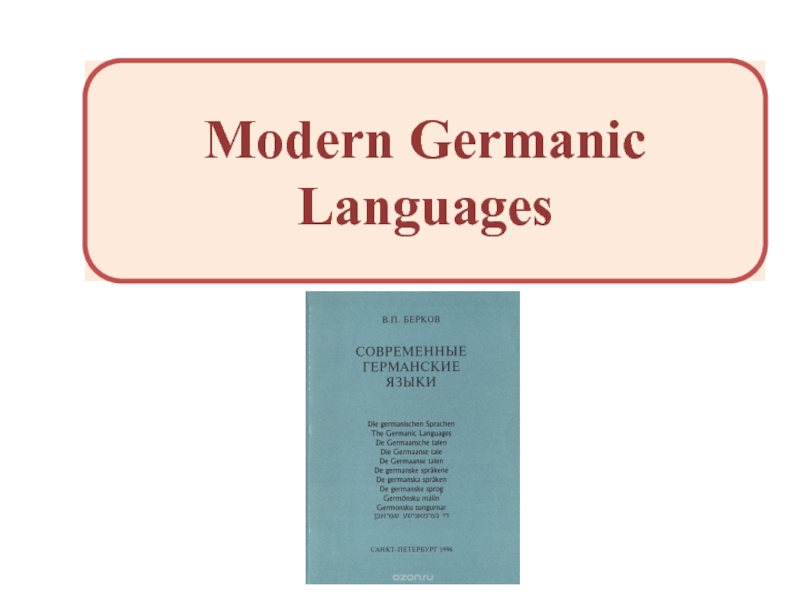

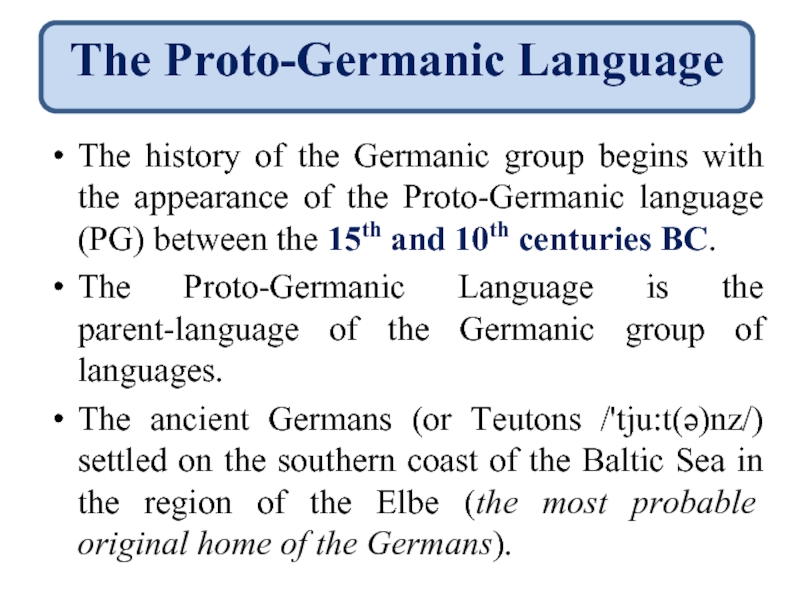
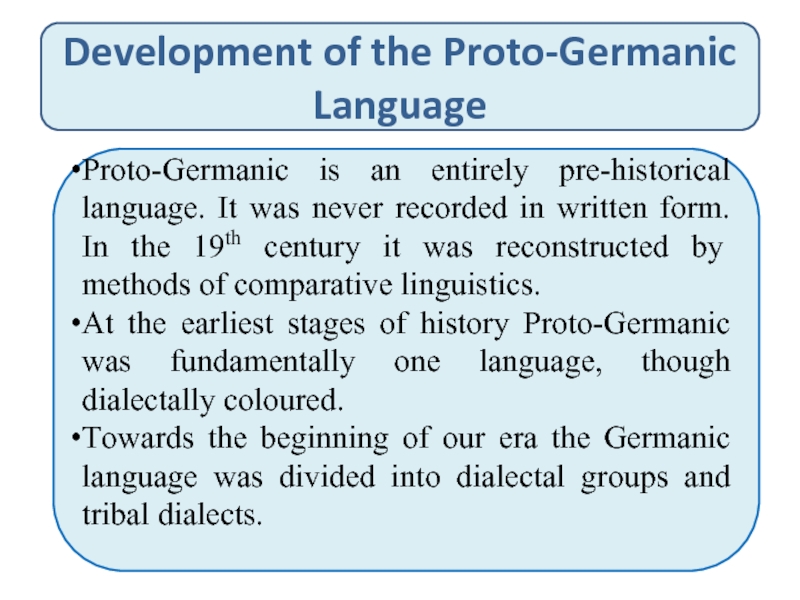


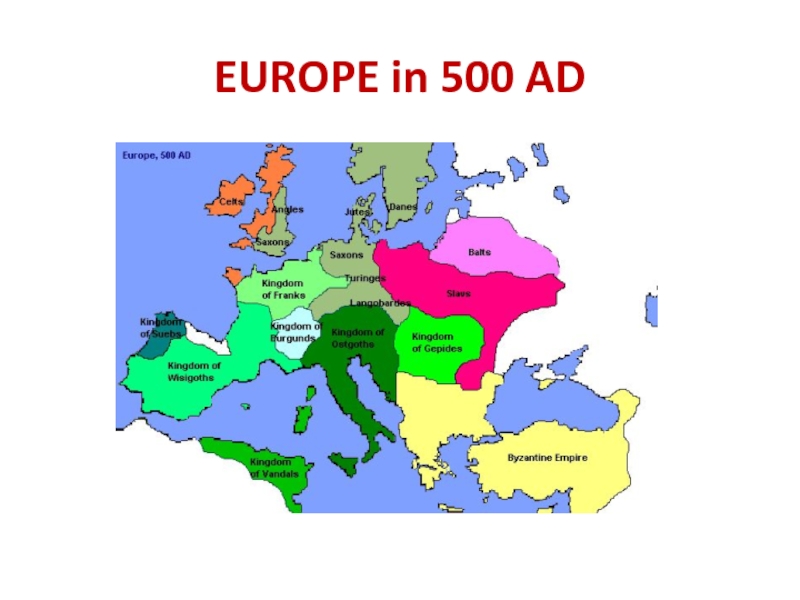
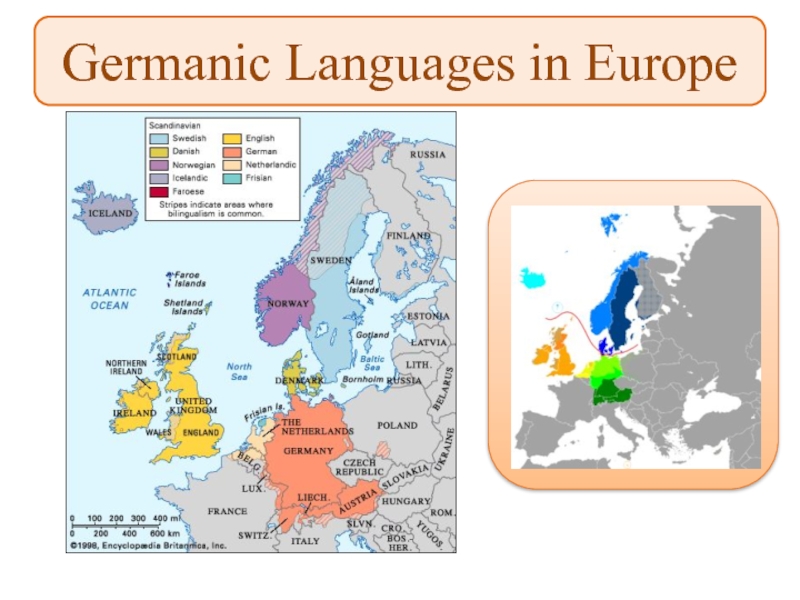


![Swedes [swi:dz], Danes [deinz], and Norwegians can understand each other’s speech rather well. But as](/img/tmb/2/134680/75aec6d5232e43c01bfab2291b7fa745-800x.jpg)
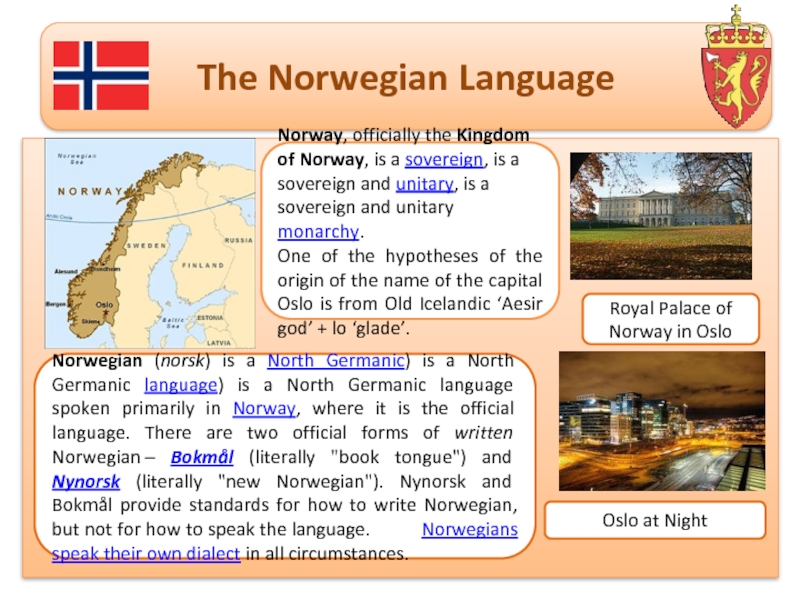
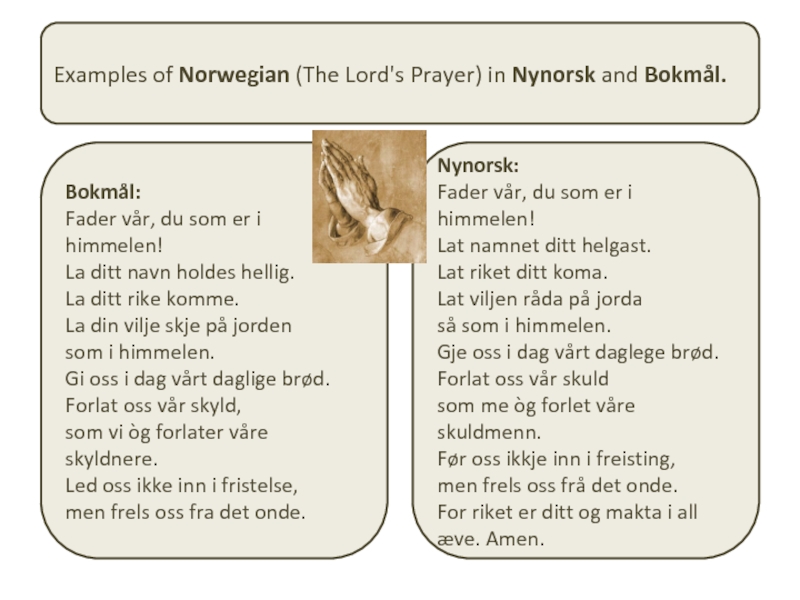
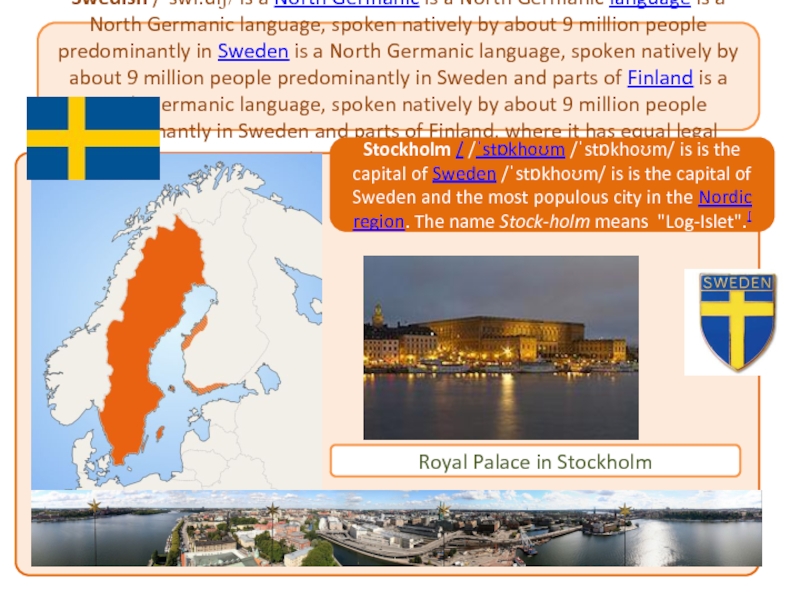
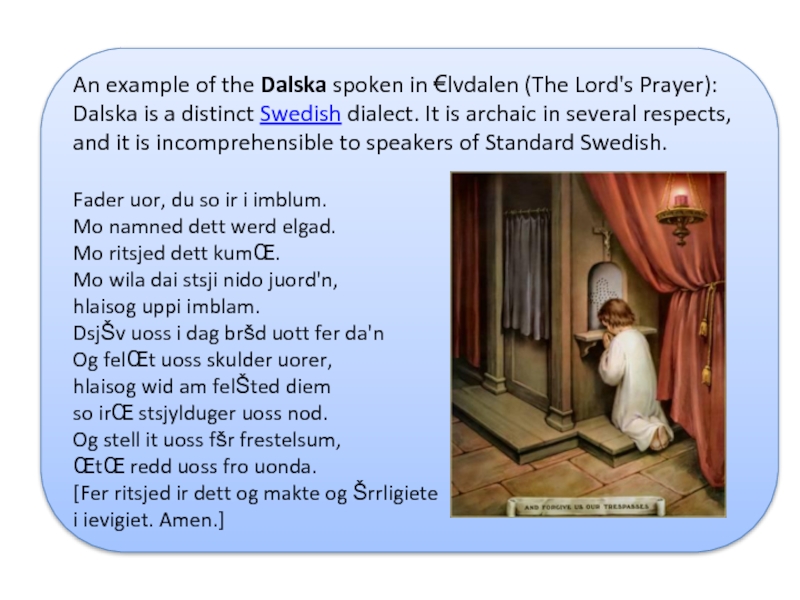
![The Danish ['dæniʃ] LanguageMuch of Denmark is highly urbanised, such as the capital city of](/img/tmb/2/134680/dde9cb3eabcefd9c8649d15de25951ba-800x.jpg)
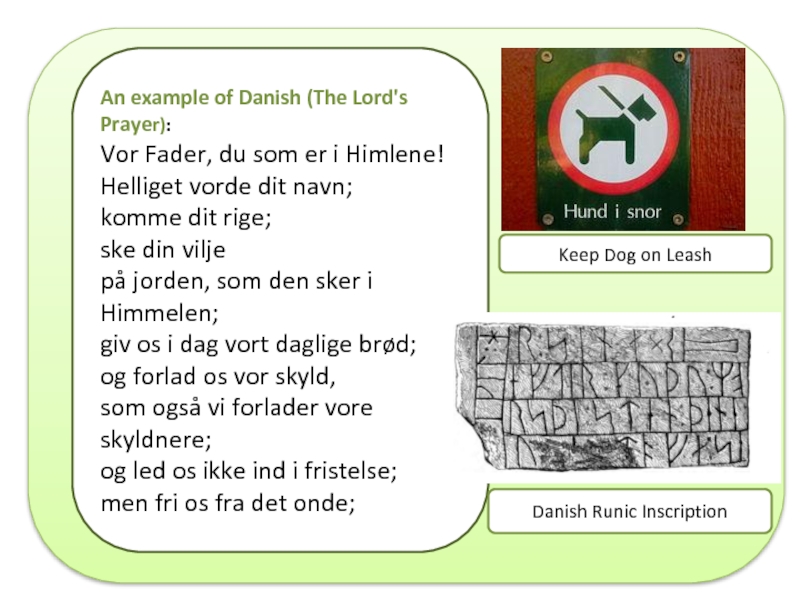
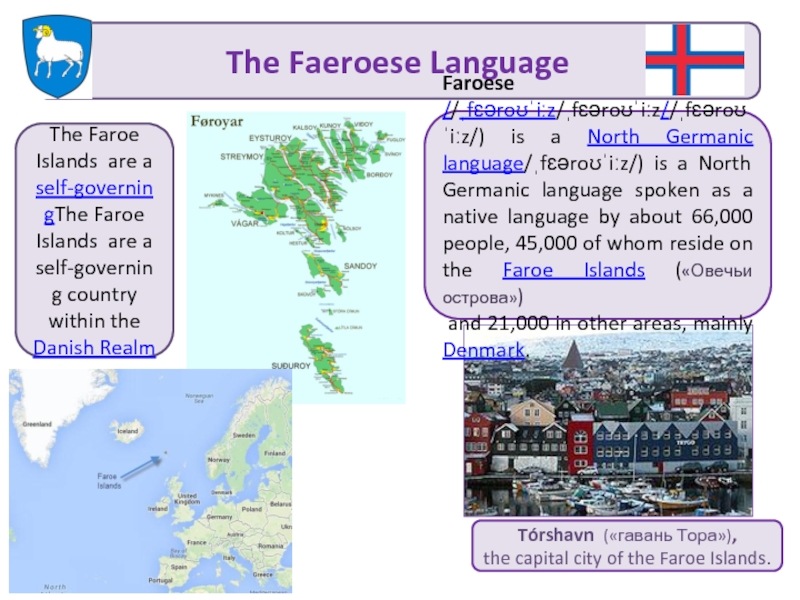
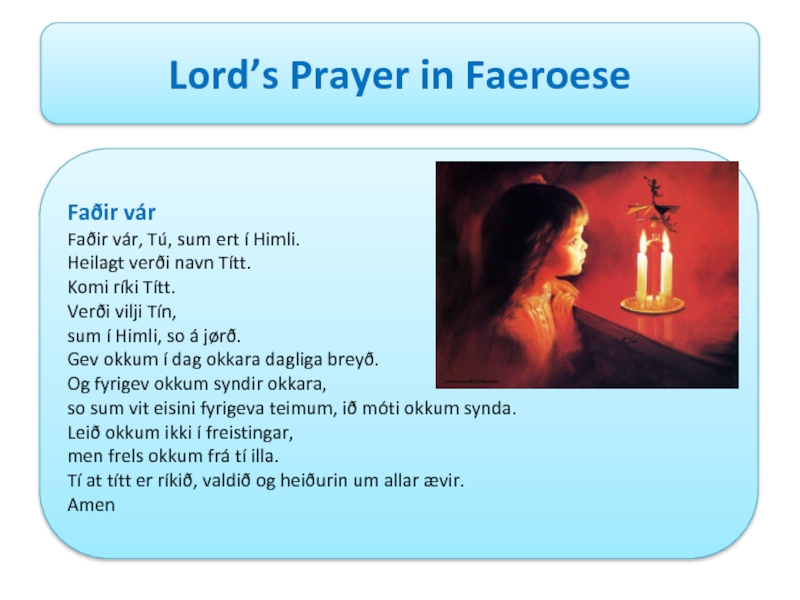

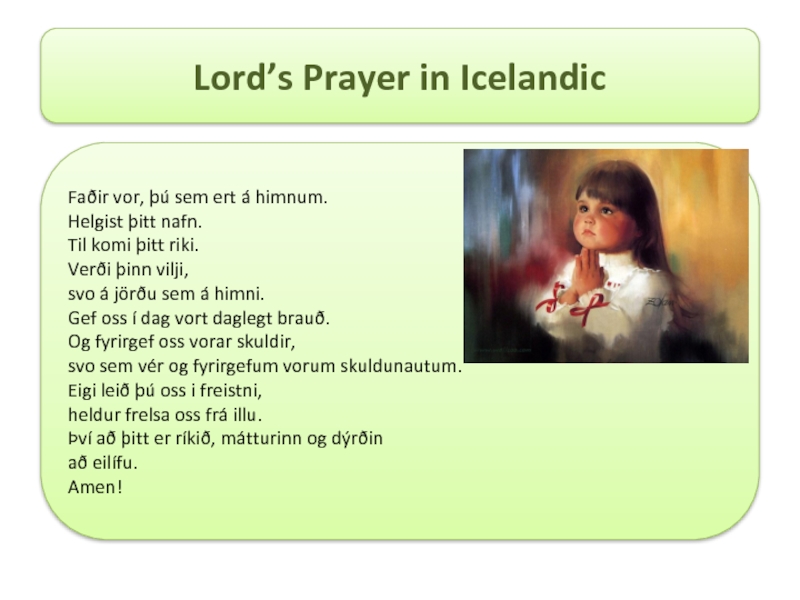
![The origin of Icelandic [ais'lændik] goes back to the Viking ['vaikiŋ] Age.Icelandic retains a four-case](/img/tmb/2/134680/9ff5faff4203eff3c251222ad4a61d24-800x.jpg)
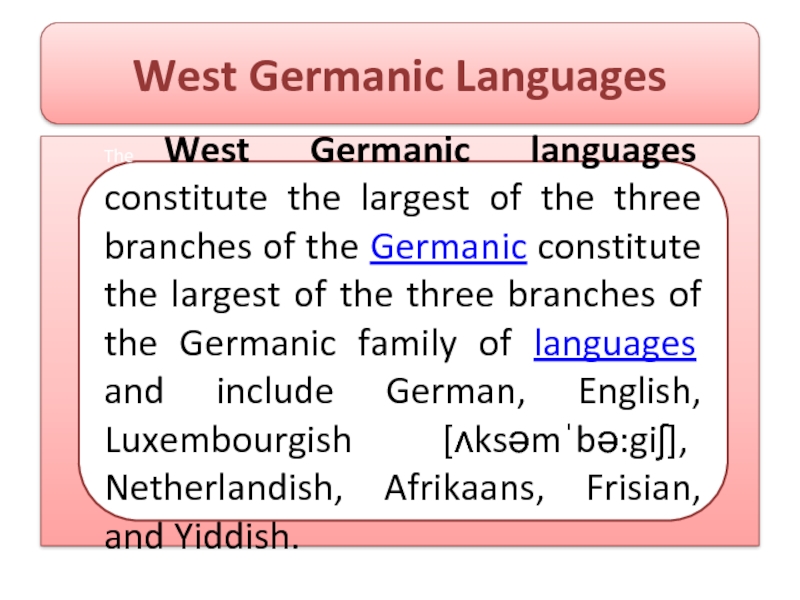


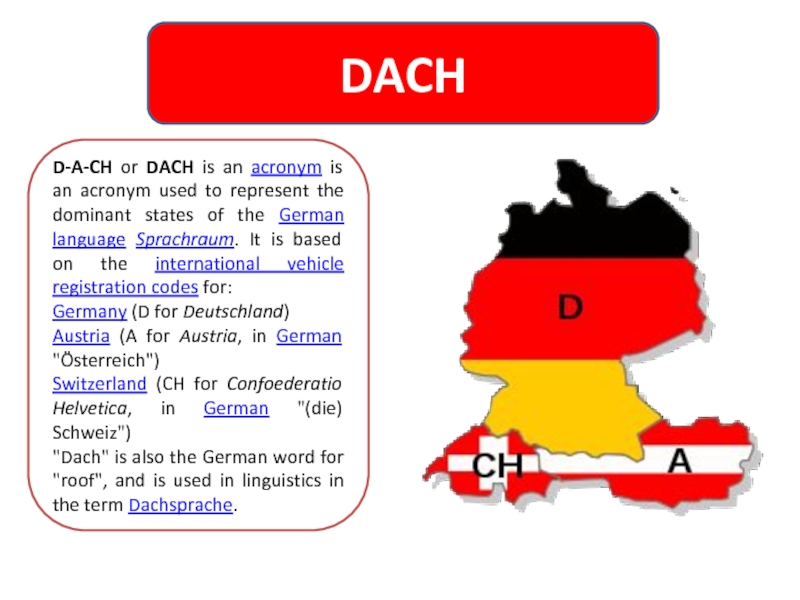
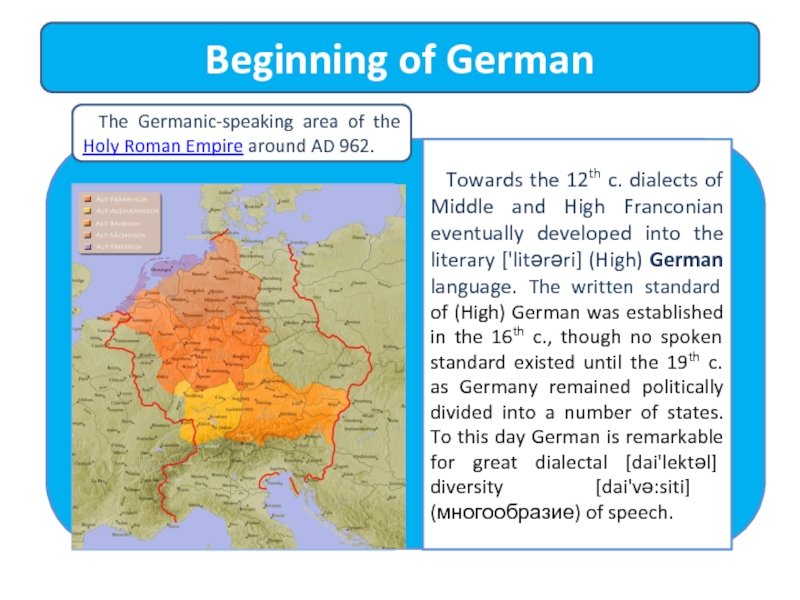
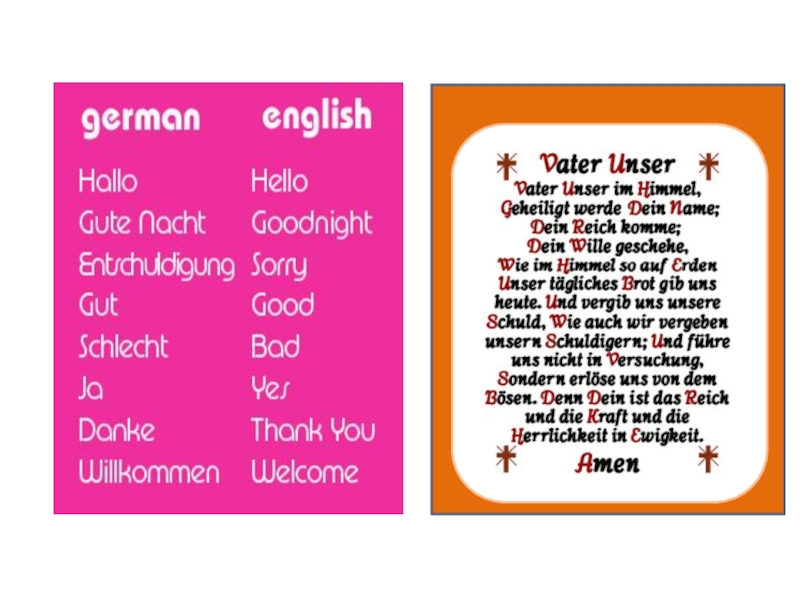
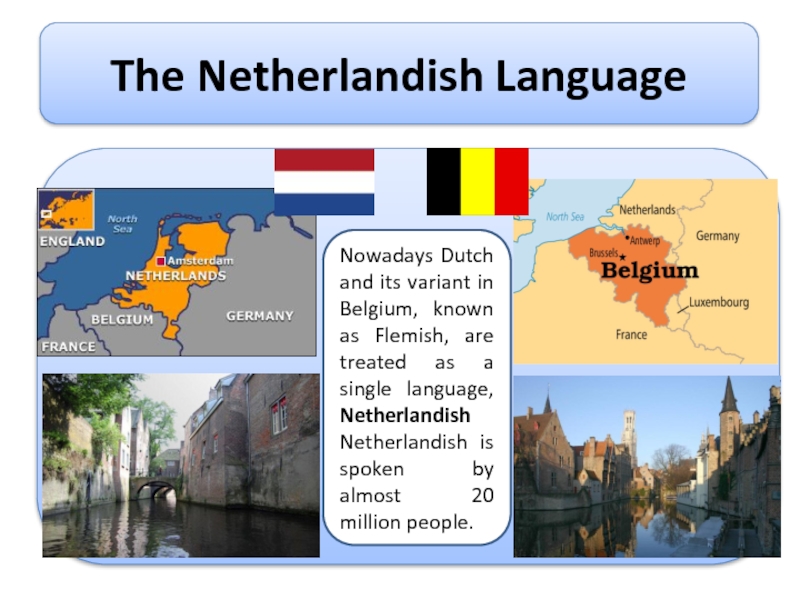
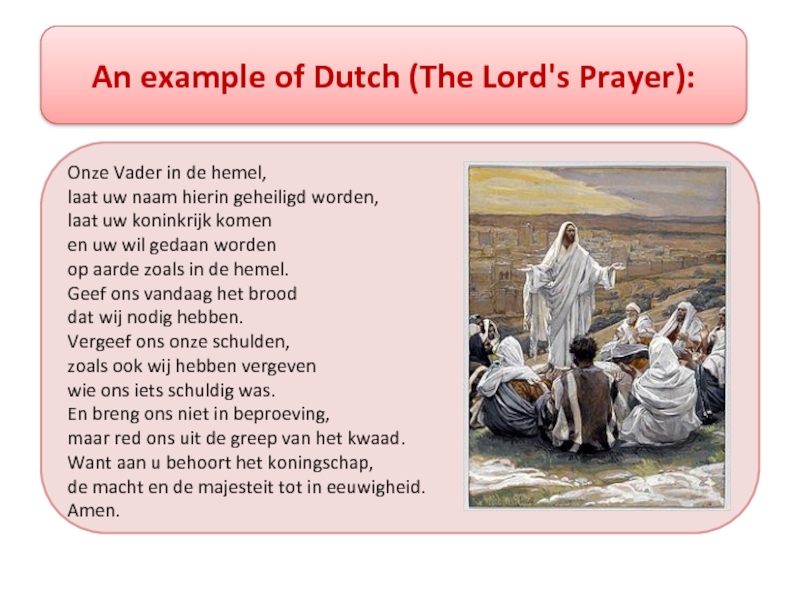
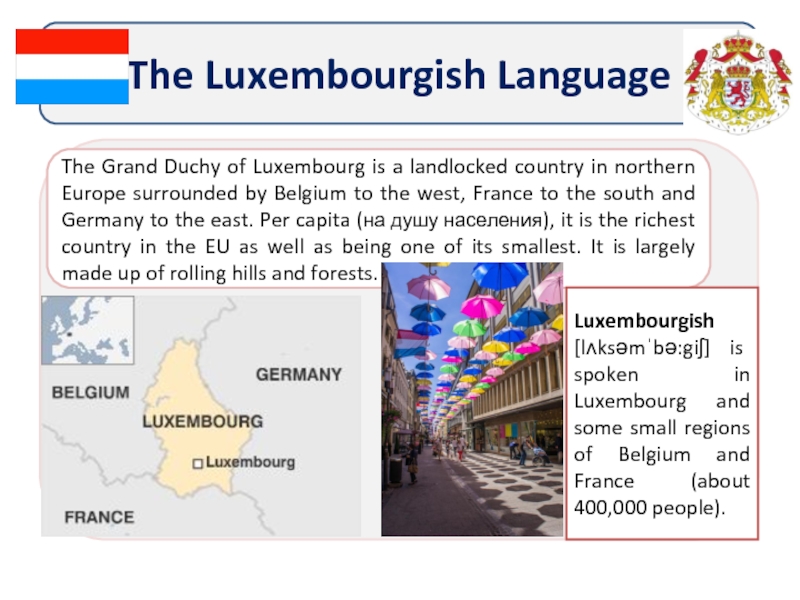
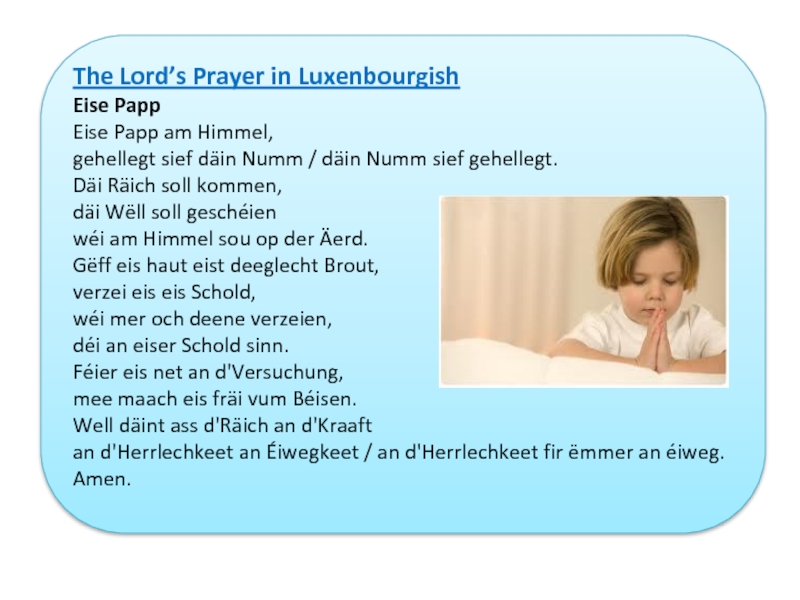

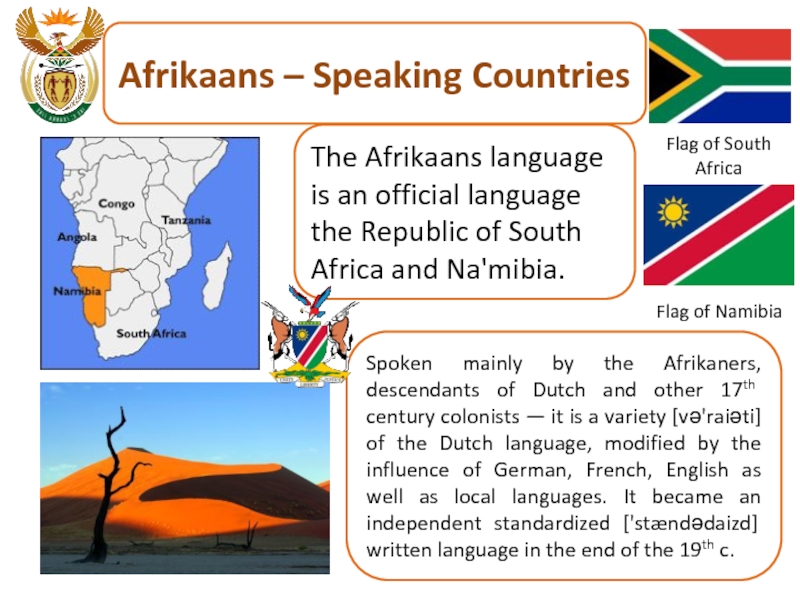

![/8YiddishYiddish alphabetYiddish ['jidiʃ] grew from the High German dialects which were adopted by numerous Jewish](/img/tmb/2/134680/9f0ce7f0f2bb718a0009414c4378020a-800x.jpg)
